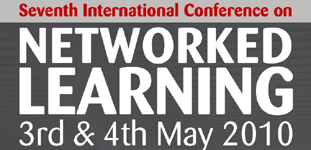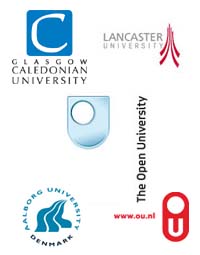

Online group work patterns: how to promote a successful collaboration?
Luis Tinoca, Isolina Oliveira
Universidade Aberta, Lisbon, Portugal & Centro de Investigação em Educação, Lisbon, Portugal,
Alda Pereira
Universidade Aberta, Lisbon & Laboratório de Educação a Distancia, Lisbon, Portugal
Abstract
Participation is a complex process, engaging the whole person, implying cognitive, emotional and relational aspects (Wenger, 1998). In online open and distant learning, group work is a commonly used strategy, given its collaborative nature and constructivist framework (Bates & Poole, 2003; Garrison & Anderson, 2003; Jonassen, 2005). In this context, collaborative learning processes are highly dependent on the shared written information and the interactions that are established among the participants. The types of interactions that occur within such groups are often decisive for its success.
The present research was developed in the context of a Curricular Unit that is part of the degree plans for the Master in E-learning Pedagogies and the Master in Educational and Multimedia Communication at the Universidade Aberta, where a new pedagogical model for online education has been implemented since 2007.
Two main research questions were asked: What are the interaction patterns that characterize successful groups? What types of constraints prevent some participants from fully engagement on the group work? To answer these questions, after the course was finished, two particular groups were identified (one characterized has very successful in their final product and one has less successful), after that, each of the group´s online discussion forums was coded and submitted to content analysis.
Data analysis involved iterative analysis and revision of the coding scheme (Strauss and Corbin, 1998). Two of the researchers derived the initial coding key from the online discussion forums used during the group project phase of the Curricular Unit. Some of the codes were quantified in order to foster a more meaningful comparison of the data by allowing patterns to be identified and further explored (McConnell, 2006).
This type of assessment was welcomed by the students and effectively implemented by all the groups but one. Nevertheless, the interpretation made by each group of what should be valued and how it should be operationalized varied significantly. Even though the groups seemed to follow similar stages throughout their project development, distinct interaction patterns emerged between more and less successful groups. This raised issues of equity and validity of the suggested method, as well as about the best strategies to foster productive online collaborative learning environments in general, and about the role of the instructor in particular.
| About NLC | Welcome Messages| Acknowledgwments | Conference Proceedings| Keynote Speakers| Index of Presenting Authors| Contact |